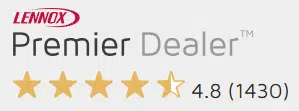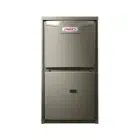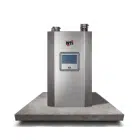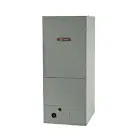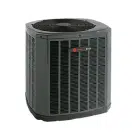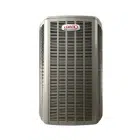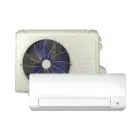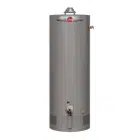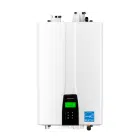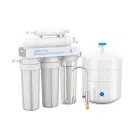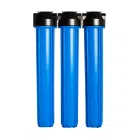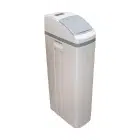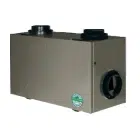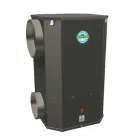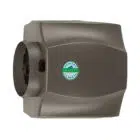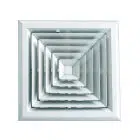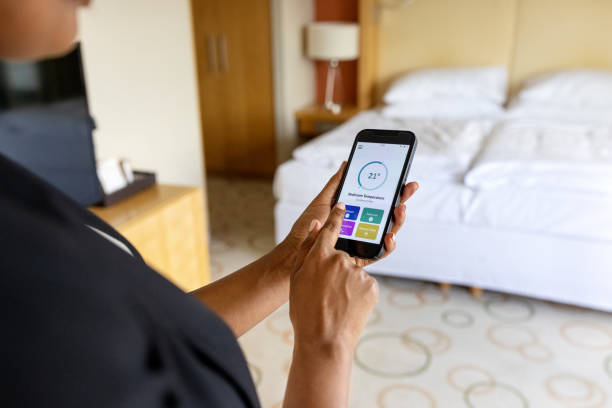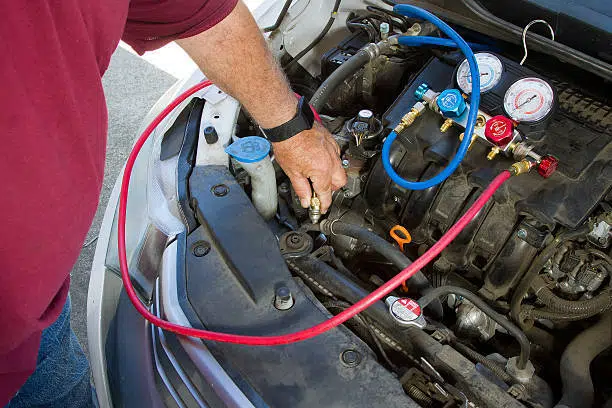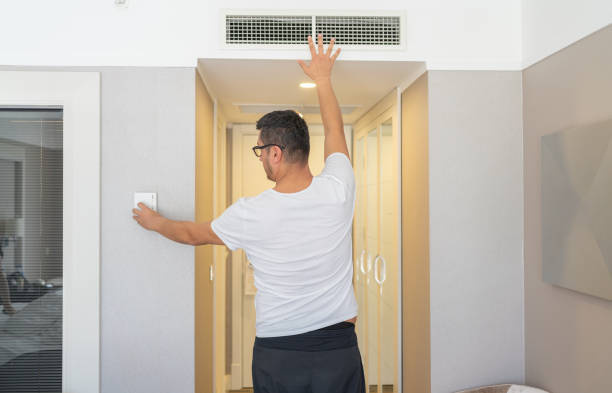
Table of Contents
Mitsubishi ductless air conditioners are known for their reliability, energy efficiency, and advanced technology. However, like any other HVAC system, they can encounter issues that trigger error codes. Mitsubishi ductless AC error codes serve as diagnostic tools, helping technicians and homeowners identify malfunctions. Understanding air conditioner error codes can save you time, prevent unnecessary repairs, and ensure your system operates optimally.
Error codes appear on the indoor unit’s display panel or remote control, signaling issues ranging from sensor failures to refrigerant leaks. Some problems can be resolved with basic troubleshooting, while others require professional intervention. We’ve prepared a detailed breakdown of Mitsubishi ductless AC error codes, explaining their meanings and possible solutions.
How to Read Mitsubishi Ductless AC Error Codes
Mitsubishi AC systems display error codes as alphanumeric combinations. These codes can appear on the control panel, wall-mounted controller, or handheld remote. If you notice a blinking LED light or an unfamiliar code, consulting the user manual is the first step. However, for more complex issues, a deeper understanding of these codes is necessary.
Common Causes of Error Codes:
- Sensor malfunctions
- Drainage issues
- Compressor problems
- Electrical faults
- Communication errors between indoor and outdoor units
- Refrigerant leaks
Before attempting any repairs, turn off the system and restart it. If the error persists, check the corresponding Mitsubishi ductless AC error code in the next section and follow the recommended troubleshooting steps.
Check out the top 7 best ductless AC models of 2025 in our previous guide.
Detailed Breakdown of Mitsubishi Ductless AC Error Codes
To make troubleshooting easier, we’ve categorized Mitsubishi ductless AC error codes based on the type of issue they indicate. Below, you’ll find a structured breakdown of common error codes, their meanings, and possible solutions for each category.
Temperature Sensor Errors
Error Code | Explanation | Solution |
|---|---|---|
P1
| Air Intake Temperature Sensor Error
| Check for loose or disconnected wires. Replace the sensor if damaged. |
P2
| Heat Exchanger Temperature Sensor (TH5) Fault
| Inspect the sensor for dirt, debris, or damage. Replace if necessary. |
P9
| Heat Exchanger Temperature Sensor (TH2) Fault
| Ensure the sensor is clean and securely connected. Contact a technician if issues persist. |
Drainage System Errors
Error Code | Explanation | Solution |
|---|---|---|
P4
| Drain Pan Overflow or Float Sensor Disconnection (CN4F)
| Check for blockages and ensure the float switch is operational. Clean or replace components if necessary. |
P5
| Drain Pump Error
| Inspect the pump for blockages or power supply issues. Replace if defective. |
Protection Mechanisms and System Safeguards
Error Code | Explanation | Solution |
|---|---|---|
P6
| Freeze or Overheat Protection Activated
| Check for airflow restrictions, dirty filters, or low refrigerant levels. |
PA
| Compressor Shutdown Due to Water Leakage Anomaly
| Inspect the drainage system and ensure all connections are secure. |
Communication and Control Board Errors
Error Code | Explanation | Solution |
|---|---|---|
E0, E3
| Remote Controller Communication Failure
| Check the remote’s batteries and ensure it is within range. |
E1, E2
| Control Board Fault
| A technician should assess the control board for faults. |
E9, EE
| Indoor and Outdoor Unit Communication Error
| Inspect wiring connections between units and reset the system. |
Compressor and Refrigerant Issues
Error Code | Explanation | Solution |
|---|---|---|
U1, Ud
| High Pressure or Overheat Protection Activated
| Check refrigerant levels and clean the condenser coils. |
U2
| High Discharge Temperature or Low Refrigerant Levels
| A certified technician should inspect for leaks and recharge refrigerant. |
Other Common Mitsubishi Ductless AC Error Codes
- U3, U4: Outdoor Unit Sensor Malfunction
- U5: Abnormal Radiator Temperature
- U6: Compressor Overload or Power Module Fault
- U7: Abnormal Overheating Due to Low Discharge Temperature
- U8: Outdoor Fan Shutdown Due to Protection Activation
- U9, UH: Voltage Irregularities or Main Circuit Synchronization Error
- UF: Compressor Overcurrent Interruption (Compressor Lockup)
- UP: Compressor Overcurrent Interruption
- Fb: Internal Control System Error (Memory Failure, etc.)
Troubleshooting and When to Call a Professional
Mitsubishi ductless AC units are designed with built-in diagnostic systems that generate error codes when issues arise. While some problems can be resolved with basic troubleshooting, others require specialized knowledge and equipment to fix properly. Knowing when to attempt a DIY solution and when to call an HVAC professional can save you time, money, and potential system damage.
Basic Troubleshooting Steps
Before calling a technician, there are several steps you can take to resolve common Mitsubishi Ductless AC error codes:
- Power Cycle the System – Turn off your AC unit using the remote or wall controller, then disconnect it from the power source for at least five minutes. This resets the system and can clear temporary glitches.
- Inspect for Loose Wiring – Visually examine connections between the indoor and outdoor units, ensuring no cables are disconnected or visibly damaged. Loose or faulty wiring can trigger various error codes.
- Check and Clean Air Filters – Dirty or clogged air filters restrict airflow, causing overheating, sensor malfunctions, and drainage issues. Clean or replace the filters regularly to prevent performance issues.
- Ensure Proper Drainage – If you encounter a P4 or P5 error (drain pan overflow or pump failure), check the drain line for blockages and clear any debris. Standing water inside the unit can trigger automatic shut-off mechanisms.
- Refer to the Mitsubishi Ductless AC Error Code Table – Identifying the exact error code can help you determine whether the issue requires a simple fix or professional intervention.
When to Call a Professional
Certain Mitsubishi ductless AC errors indicate more serious underlying problems that require specialized expertise. If you encounter any of the following issues, it’s best to contact an air conditioner repair service:
- Electrical or Control Board Failures – Error codes like E1, E2, or E9 suggest communication errors between the indoor and outdoor units, often due to faulty control boards or electrical malfunctions that require professional diagnosis.
- Persistent Refrigerant Leaks – If your system repeatedly displays U2 or Ud codes, it may indicate low refrigerant levels or leaks that need to be sealed. Handling refrigerant requires specialized tools and should only be performed by licensed professionals.
- Compressor-Related Malfunctions – Compressor shutdowns due to overheating (U1, U5) or power interruptions (UP, UF) can lead to system failure. A technician will assess refrigerant levels, pressure sensors, and compressor performance to determine the cause.
Complex Sensor Failures – Temperature and heat exchanger sensor errors (P1, P2, P9) can prevent your AC from cooling effectively. While some sensor issues are due to dirt or minor disconnections, others involve faulty components that require replacement.
Conclusion
Regular AC maintenance is key to preventing many Mitsubishi Ductless AC error codes. If your AC is experiencing recurring issues despite troubleshooting, professional servicing may be necessary to avoid costly repairs down the line. HVAC Service Solutions offers expert diagnostics, repairs, and maintenance to ensure your Mitsubishi ductless system operates at peak efficiency. Contact us today for reliable HVAC support!
FAQs
1. What do Mitsubishi ductless AC error codes mean?
Mitsubishi ductless AC error codes are diagnostic indicators that help identify system malfunctions. These alphanumeric codes appear on the indoor unit’s display or remote control, signaling issues like sensor failures, drainage problems, or compressor faults. Understanding these codes allows homeowners and technicians to troubleshoot problems efficiently.
2. How do I reset my Mitsubishi ductless AC after an error code?
To reset your Mitsubishi ductless AC:
- Turn off the unit using the remote control or wall switch.
- Disconnect power at the breaker or unplug the system.
- Wait for about 5 minutes to allow the internal components to reset.
Restore power and turn the system back on.
If the error persists, further troubleshooting may be needed.
3. Why is my Mitsubishi AC displaying a P6 error code?
The P6 error code indicates freeze or overheat protection activation. This can be caused by restricted airflow, a dirty air filter, or low refrigerant levels. Check and clean the air filter, ensure vents are unobstructed, and if the issue continues, contact a professional HVAC technician.
4. What should I do if my Mitsubishi AC shows an E9 or EE error code?
The E9 or EE error codes indicate a communication failure between the indoor and outdoor units. To troubleshoot:
- Check the wiring connections between both units.
- Restart the system.
If the problem persists, professional service may be required to inspect the control board or wiring.
5. Can I fix a P5 error code on my Mitsubishi AC myself?
The P5 error code signals a drain pump failure. Try these steps:
- Ensure the drain hose is not clogged.
- Check if the pump is running when the AC operates.
- If the pump is defective, it may need to be replaced by a technician.
6. How do I fix a U1 or Ud error code on my Mitsubishi ductless AC?
A U1 or Ud error code indicates high system pressure or overheating. Possible causes include dirty condenser coils, refrigerant overcharge, or compressor issues. Clean the outdoor unit’s coils, ensure there is proper ventilation, and if the issue persists, contact HVAC Service Solutions for expert diagnostics and repair.
7. What causes a PA error code on a Mitsubishi ductless AC?
A PA error means the compressor was forcibly stopped due to abnormal water leakage detection. Common causes include:
- A clogged drain line
- A faulty float switch
An internal water sensor malfunction
To resolve this, inspect the drainage system and clean any blockages. If the issue continues, call HVAC Service Solutions for professional inspection.
8. My Mitsubishi AC won’t turn on, but no error code is displayed. What should I do?
If the unit won’t turn on and no error code appears:
- Check if the circuit breaker has tripped.
- Ensure the remote batteries are functional.
- Inspect for loose wiring connections.
- If the unit still doesn’t start, it may have an internal component failure, requiring professional service.
9. How often should I service my Mitsubishi ductless AC to prevent errors?
Regular maintenance helps prevent common AC issues. It’s recommended to:
- Clean the air filter every 2-4 weeks.
- Schedule professional servicing at least once a year.
Check refrigerant levels periodically.
Routine maintenance by HVAC Service Solutions can help extend your system’s lifespan and reduce the chances of encountering error codes.
10. Where can I find a Mitsubishi ductless AC repair specialist in Canada?
If you’re experiencing persistent Mitsubishi ductless AC error codes, HVAC Service Solutions provides expert diagnostics and repair services across Canada. Our certified technicians specialize in Mitsubishi AC systems and can quickly resolve any error codes to keep your system running efficiently. Contact us today for professional assistance!
Share
